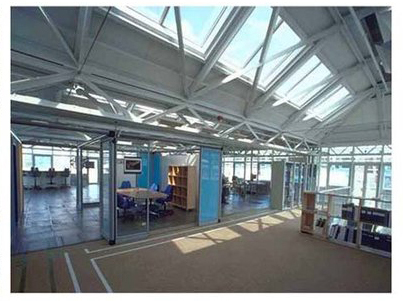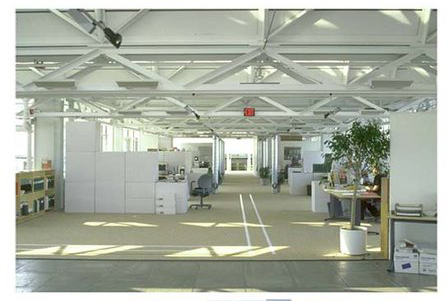
Carnegie Mellon University (CMU) is a global research university with more than 13,200 students, 100,000 alumni, and 5,000 faculty and staff. CMU has been a birthplace of innovation since its founding in 1900 and today, the institution is a global leader bringing groundbreaking ideas to market and creating successful startup businesses. The award-winning faculty members are renowned for working closely with students to solve major scientific, technological, and societal challenges, putting a strong emphasis on creating things—from art to robots. With 100 percent of CMU’s electricity coming from green power sources, the university is ranked as a green power leader by the U.S. Environmental Protection Agency.
As part of a research project funded by the Department of Energy, CMU installed the Encelium Light Management System to control their primarily fluorescent lighting system in a 7,000 square foot Robert L. Preger Intelligent Workplace, a research lab that studies the integration of different technologies and their impact on human comfort. In the lab, researchers look at user behavior and the types of mechanical systems and technology needed to maximize performance.
A flexible lighting control system was required to serve as the backbone for research on user interfaces. In the lab, approximately ten students, seven faculty and staff, and 50 master’s students look at the integration of different technologies and their impact on occupant comfort. The lab relies a lot on natural daylight and does not use much artificial lighting during the day.
“In the lab, we look at user behavior and what type of mechanical systems and technologies are needed to maximize performance. We create computer models of a building’s thermal behavior and lighting consumption and how occupants in the structure can be expected to perform,” “The flexibility of the Encelium system enables us to efficiently support research in the lab while reducing energy consumption.”
-Bertrand Lasternas, senior research scientist at Carnegie Mellon University and manager of the Encelium system in the living lab
The Encelium Light Management System is scalable and enables facility managers to cost-effectively enhance the occupant experience of their lighting spaces with just a click of a mouse. The system is a proven, flexible, and cost-effective way to manage lighting. It is one of the only lighting control systems that can gather data from a range of lighting component suppliers to tailor lighting usage with changing requirements – helping to make buildings fit for the future.
At the core of the Encelium System, Polaris software facilitates the commissioning, usage, and data analysis of the lighting installation and is accessible anytime, anywhere via an Internet connection. The Polaris color dashboard shows how efficient an installation is and immediately reports the energy savings achieved. CMU uses the Encelium system in the lab to control the lighting in the open space, assigning and changing zones quickly and easily.
 The lab has touch screens on the walls to set up scenes and control the lighting in different areas. Typically, with three-button wall controls, scenes range from the highest light output on the top while the middle and bottom buttons control lower light levels. CMU researchers recognized that users automatically push the top button and are satisfied with the full light output, without even trying the lower light levels. CMU used the Encelium system to re-program the buttons so that the top button controlled the lower illumination. This resulted in energy savings estimated at 70 percent, with no decrease in user satisfaction and task performance.
The lab has touch screens on the walls to set up scenes and control the lighting in different areas. Typically, with three-button wall controls, scenes range from the highest light output on the top while the middle and bottom buttons control lower light levels. CMU researchers recognized that users automatically push the top button and are satisfied with the full light output, without even trying the lower light levels. CMU used the Encelium system to re-program the buttons so that the top button controlled the lower illumination. This resulted in energy savings estimated at 70 percent, with no decrease in user satisfaction and task performance.
Additional energy conservation measures include the installation of a variety of sensors. Occupancy sensors turn off lights when no presence is detected. In the spaces with no occupancy sensors, time schedule is used, automatically switching off the lights during projected unoccupied periods. Daylight sensors dim ambient and task lights as daylight increases and turn up lights when requested. Always focused on innovation, CMU is tapping into the flexibility of the Encelium system to add user-control advancements. A new app allows users to control the lighting from their mobile devices. They are also experimenting with additional user interfaces like voice recognition for controlling the lights, in addition to other aspects of the office environment such as window blinds.

